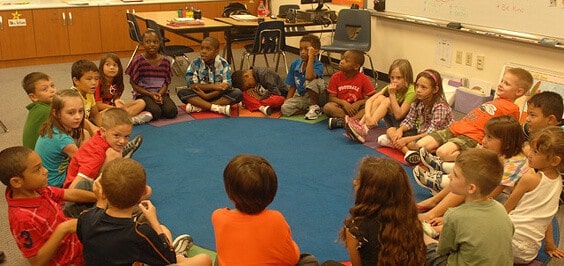The future occupations of U.S. immigrant children are influenced by how similar their native language is to English, finds a new study by scholars at Duke University and the U.S. Naval Postgraduate School.
“The more difficult it is for the child to learn English, the more likely they will invest in math/logic and physical skills over communications skills,” said co-author Marcos Rangel, an assistant professor of public policy and economics at Duke’s Sanford School of Public Policy. “It is really a story about what skills people who immigrated as children develop given the costs and benefits associated with the learning processes.”
Two factors strongly influence the skills immigrants use as adults, researchers found: immigration before the age of 10, and whether immigrants’ native language is linguistically distant from English.
Immigrants who arrive before the age of 10 pursue occupations very similar to those pursued by native-born Americans. They develop the same range of skills as native-borns, including communication, math/logic, socio-emotional and physical skills.
But for those who are older when they immigrate, the picture is different. After age 10, learning a second language is more difficult, and a child’s particular linguistic background matters more. Some languages, such as Vietnamese, are linguistically very distant from English. Children from those countries are more likely to major in science, technology, engineering and math (STEM) fields than those whose native language is linguistically close to English, such as German.
“Late arrivals from English-distant countries develop a comparative advantage in math/logic, socio-emotional and physical skills relative to communication skills which ultimately generates the occupational segregation we are used to seeing in the labor market,” Rangel said.
The choice of majors made it clear that where these immigrants ended up in the labor market was not just because of different treatment by employers. It was also due to “the way the immigrants themselves look ahead and invest their time in becoming skilled in different tasks,” Rangel said.
The study, published online in the journal Demography on March 20, provides insight into why “some U.S. immigrants find it more attractive to invest in brawn rather than in brain, in mathematics rather than in poetry, in science rather than in history,” write Rangel and co-author Marigee Bacolod, associate professor of economics at the U.S. Naval Postgraduate School’s Graduate School of Business and Public Policy.
“Public policy designed to improve the education of English-learners could potentially have distinct long-lasting effects over the assimilation of immigrant children and over the future distribution of skills within the U.S. workforce,” the authors conclude.
The researchers used data from the 1990 and 2000 U.S. Censuses, the 2009 to 2013 American Community Survey and the Dictionary of Occupational Titles and the Occupational Information Network. The researchers also used a measure developed by the Max Planck Institute of Evolutionary Anthropology to determine the distance of a language from English.
CITATION: “Economic Assimilation and Skill Acquisition: Evidence from the Occupational Sorting of Childhood Immigrants” by Marigee Bacolod, U.S. Naval Postgraduate School and Marcos Rangel, Duke University. Demography, March 20 2017.


